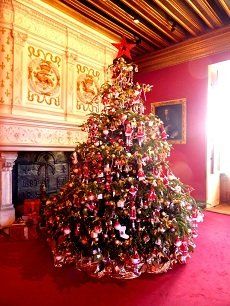Chateau-de-chenonceau
Loire Valley chateaux - Chateau de Chenonceau
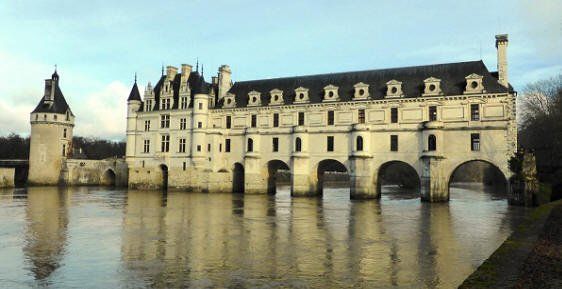
Chateau de Chenonceau is the most visited and photographed chateau of the Loire Valley
in France. It is often described as ‘the ladies
chateau’ as throughout its history it is they
who have most influenced its design and its
destiny...it was not always the chateau we see
today.
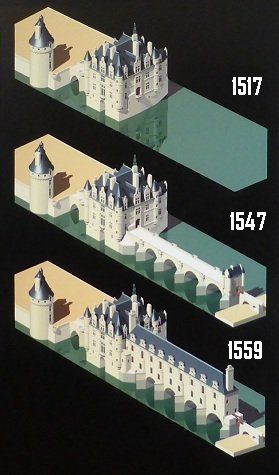
Thomas Bohier, in 1512,
acquired what was a small fortress by the
river Cher and decided to replace it with a
'Renaissance' style chateau leaving only the
keep from the original building.
It was his wife Katherine Briconnet who oversaw its build as her husband spent a lot of time away at war and she has left a great legacy. The chateau was later held over to the monarchy to pay-off debts and used by them to stage hunts and festivals.
Henri II gave it to his mistress Diane de Poitiers it was she who added the bridge over the Cher as well as the gardens.
When Henri died, the Queen, Catherine de' Medici, forced Diane out of Chenonceau (to
Chateau de Chaumont
), even though by then she was its legitimate owner.
Catherine proceeded to build the gallery and
grand ballroom on Diane’s bridge which
finally gave Chenonceau its now iconic look.
Diane would in
fact refuse to live at Chaumont and the "Eternally Beautiful" lady of Chenonceau would finish her days in the nearby castle of Anet.
Chenonceau castle
is reasonably well furnished with Renaissance furniture, a good collection of 16 th and 17 th century tapestries and a great number of masterpieces.
Le Primatice, Rubens, Le Tintoret, Rigaud, Nattier are among the most famous names that can be found there
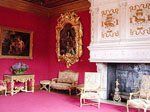
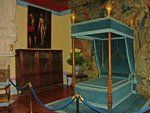
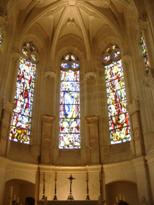
The small chapel is a delight -the original windows here were destroyed by a bombing in 1944; the replacement stained glass were made by a master glassworker 1954. There is a gallery where the 'royals' would attend mass. Allegedly it was saved during the Revolution by Madame Dupin converting it into a wood store!
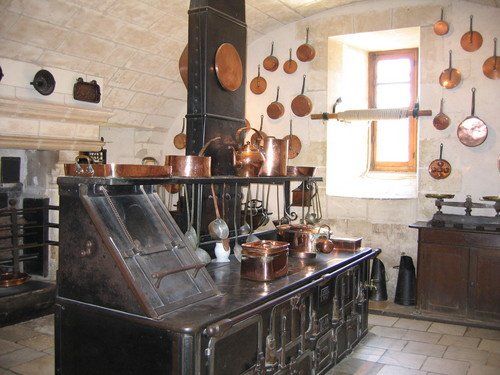
The kitchens of chateau de Chenonceau are located within its vaulted cellars on the first and second piers of the 'bridge'. There is a small landing platform beneath, this was where supplies would be transferred from riverboats to the servants for stocking.
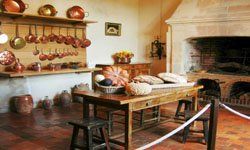
The 16th century chimney in the pantry is the oldest in the chateau. They look so pristine -- it would be interesting to go back to a time when the staff were busying about trying to cater for their demanding royal hosts above and see what the
real
conditions were like!
It survived the revolution due to its then owners being well respected by the local population and because of its strategic position as a crossing of the river Cher. Henri Menier, whose descendants still own the castle, bought it in 1888.
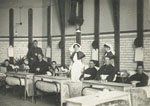
During the First World War,
Chenonceau
castle was used as a hospital. It is believed Madam Menier even nursed some of the soldiers herself and in the second World War it was used as a route by the Résistance to enter Vichy ( Free) France from the German occupied part of the country as the River Cher was the dividing line between the two. It was during this time the 'modern' equipment was fitted in the kitchens
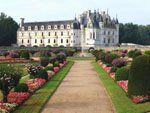

As you walk the Plane tree lined avenue (after having paid your money) you can see little of the spectacle that awaits you at the end. Depending on the time of year you are greeted with a variety of colourful displays(130K bedding plants are used in summer) that make you stop and stare before taking in the sight you'll have probably seen in pictures many times before but they are nothing compared to the real thing!
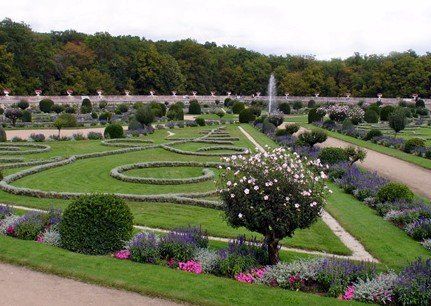
Chenonceau's well maintained gardens and grounds are a delight.
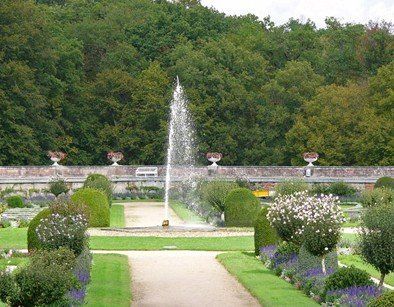
You can walk through the gardens illuminated at night.
Fridays, Saturdays and Sundays in June and every evening from July 1 to August 31.
Starts 21 h 30
Fridays, Saturdays and Sundays in June and every evening from July 1 to August 31.
Starts 21 h 30
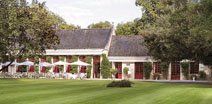
There is a good restaurant/café, 'The Orangerie' built in what used to be the stables where you can have a meal or just a coffee to revive you.
There is also a snack bar/creperie located near the ticket office.
It is best not to visit Château de Chenonceau mid-day or mid-afternoon if you want to avoid the crowds and remember to have your driving licence and passport with you if you want to hire their audio equipment.
In France you are required to have these items with you at all times during your visit.
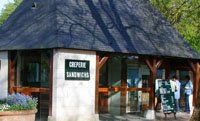
The car park, though large, can be busy so you may have to be patient. When walking to the chateau you can take the well worn route of the tree lined avenue or take a left through the park which should be a little quieter. Though as we have said to catch site of its splendour after having walked the length of the avenue is a pleasure in itself.
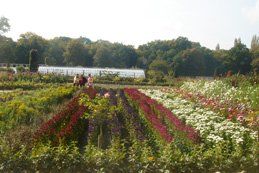
When leaving take a walk to the left of the restaurant and look at their 'old village' setting - charming - and then on to their nursery gardens.
Open every day
from January 1to February 15: 9.30 am to 5.00 pm
from February 16 to March 31: 9.30 am to 5.30 pm
from February 16 to March 31: 9.30 am to 5.30 pm
from April 1 to May 31: 9 am to 7 pm
from June 1 to June 30: 9 am to 7.30 pm
from July 1 to August 31 : 9 am to 8.00 pm
from September 1to September 30 : 9 am to 7'30 pm
from October 1 to October 25: 9 am to 6:30 pm
from July 1 to August 31 : 9 am to 8.00 pm
from September 1to September 30 : 9 am to 7'30 pm
from October 1 to October 25: 9 am to 6:30 pm
from October 26 to November 11: 9 am to 6:00 pm
from November 12 to December 31: 9.30 am to 5 pm
from November 12 to December 31: 9.30 am to 5 pm
Prices
2015
Adults
Children
Students
Castle (with brochure)
12.50 €
9.50 €
9.50 €
Castle (audio video guided tour)
17.00 €
13.50 €
13.50 €
External links:
http://www.chenonceau.com/
Website of Chateau de Chenonceau.
http://www.podibus.com/
In French but with good
'virtual tour'
.
Blogroll
:
nadomissy.blogspot.fr
Personal blog post on
visit
experienceloire.blogspot Chenonceau at Christmas
By car from Paris:
A10 motorway (exits Blois or Amboise).
From Paris,
the duration of the trip is:
- two hours by car via motorway A10 (exit Blois or Amboise)
- one hour by TGV from Paris-Montparnasse to Saint-Pierre-des-Corps (Tours)
- one hour and 35 minutes by TGV from Paris-CDG Airport to Saint-Pierre-des-Corps (Tours)
- 25 minutes by TER Tours-Chenonceaux (village)
By car from Tours:
Take D40, 30km east of the city (North side of River Cher).
Parking in the
large shaded car parks
are free for visitors.
Back to top.
"Author: Jim
Craig"
